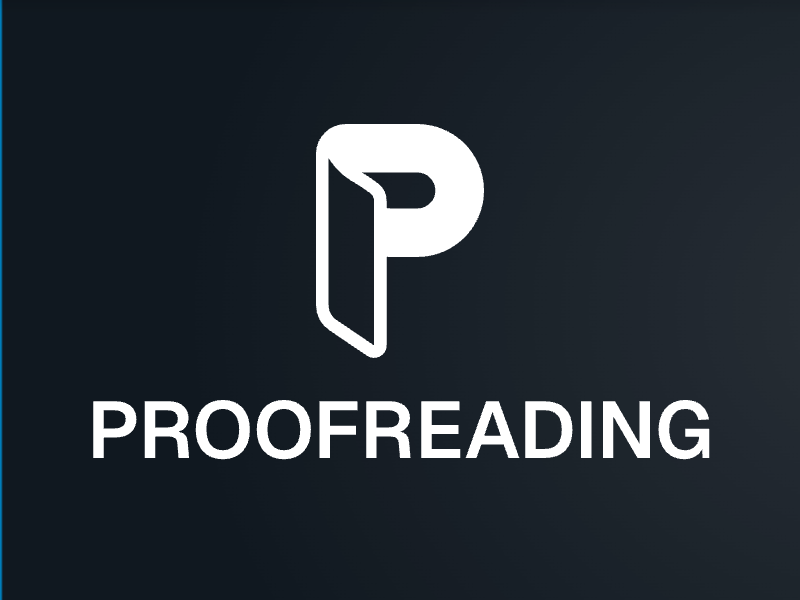10 Tips for Choosing the Right AI Tools for Your Needs

Choosing the right AI tools in 2025 is very important, especially when considering the 10 Must-Try AI Tools in 2025. Whether for work or personal projects, the right tool helps a lot. Did you know AI can improve business results by 40%? That’s huge! But with so many choices, picking the best tool can be hard. You’re not the only one—44% of groups are still testing AI. They face problems like keeping data safe and making systems work together. To do well, you need to choose tools that match your goals and give real benefits, including those highlighted in the 10 Must-Try AI Tools in 2025.
Key Takeaways
Identify your goals before choosing AI tools. Knowing what you want to achieve helps you select the right tool for your needs.
Evaluate the ease of use of AI tools. Choose tools with simple interfaces and quick learning curves to save time and reduce frustration.
Consider the cost and potential return on investment (ROI) of AI tools. Calculate all costs and benefits to ensure the tool is worth the investment.
Research the vendor's reputation. Read reviews and check their history to ensure you choose a reliable provider.
Test AI tools before making a decision. Use free trials or demos to see if the tool fits your needs and works well in real tasks.
Know Your Goals and Needs
Picking the right AI tools begins with knowing your goals. Without clear plans, you might choose a tool that doesn’t help. Let’s take it step by step.
Find the Problem You Need to Fix
What’s the issue you’re dealing with? Maybe it’s boring tasks or handling big data. AI tools work best when solving specific problems. For example:
AI research tools handle surveys and study data to spot issues.
These tools save time and keep quality high, helping businesses a lot.
Think about your struggles. Do you need an AI coding helper to make coding faster? Or do you want instant code tips to work better? Finding the problem is the first step to the right solution.
Decide What Success Means to You
After finding the problem, ask, “What does success mean?” Do you want to save time, cut costs, or be more accurate? Maybe you want all three. For example, if using AI for coding, your goal might be better work done faster. Clear goals will help you pick tools that fit your needs.
Focus on Features That Match Your Goals
Not all tools are the same. Some have cool features, but do they fit your needs? If using an AI coding tool, look for things like code tips or system links. A tool with instant code tips might be key if speed matters. Make a list of must-have features and use it to compare tools.
Tip: Don’t let fancy features distract you. Stick to what helps your goals.
By knowing your goals and needs, you’ll be ready to pick the right AI tools. This step makes sure you’re not just picking a tool but choosing one that truly helps.
Assess Ease of Use
Choosing AI tools should be simple and easy to handle. If a tool is hard to use or takes too long to learn, it can slow you down. Let’s break this into three main points.
Check the User Interface
The user interface is what you see first in an AI tool. A simple and clear design makes it easier to use. You shouldn’t waste time searching for features. Pick tools that make tasks like creating code or studying data easier. Good tools often have dashboards that neatly show all options.
Here’s what makes a good interface:
Aspect | Description |
|---|---|
Functionality | Tools should meet specific needs, like automatic data checks or user testing. |
Usability | Easy-to-use tools help teams work together better. Hard-to-learn tools slow progress. |
Human Oversight | AI should support human skills to ensure insights are correct. |
Validation of Insights | AI results should be checked by humans for accuracy and usefulness. |
Behavioral Insights | AI can give deeper emotional and behavior insights to improve research. |
A good interface doesn’t just look nice—it helps you work better.
Think About the Learning Curve
How fast can you start using the tool? Some tools are ready to use right away, while others need training. If you’re new to AI tools, choose ones with guides or templates. These features make learning easier. For example, tools with quick code tips save time and reduce stress.
Tip: Don’t ignore onboarding. A hard-to-learn tool can slow your team, especially if many people will use it.
Look for Customization Features
Everyone has different needs. Customization lets you adjust the tool to fit your tasks. You can change settings for code tips or connect the tool to your systems. Some tools let you set preferences like syntax styles or automation rules. This makes the tool work the way you want.
Customizable tools stand out because they fit your goals. They don’t force you to change your methods—they improve them.
By focusing on ease of use, you’ll find tools that meet your needs and make work simpler. Whether it’s a user-friendly AI tool or a coding assistant, the right choice will help you work faster and smarter.
Evaluate Cost and ROI
When picking AI tools, knowing their cost and value is key. Let’s simplify this so you can choose wisely.
Compare Pricing Models (Subscription vs. One-Time Purchase)
AI tools usually offer two payment options: subscriptions or one-time payments. Subscriptions charge monthly or yearly fees. These are good for regular updates and support. One-time payments are upfront but may lack updates later.
Think about how you’ll use the tool. For long-term projects, subscriptions might be better. They give access to new features like updated code tips. For short-term tasks, one-time payments could save money.
Tip: Check what’s included in the price. Some tools charge extra for advanced features or more users.
Calculate the Potential ROI
Before buying an AI tool, figure out its return on investment (ROI). Here’s how:
List all costs, like the tool’s price, training, and upkeep.
Measure benefits, such as time saved or better results.
Use this formula: ROI% = (Benefits - Costs) / Costs * 100.
For example, if an AI coding tool helps finish tasks faster, calculate the time saved in dollars. This shows if the tool is worth it.
Factor in Hidden Costs (Training, Maintenance, etc.)
Some AI tools have hidden costs you might not notice at first. Training takes time to teach the tool and adjust settings. Maintenance costs include updates to keep it working well. Some tools also need retraining to stay useful.
These extra costs can add up. If using an AI coding tool, think about team training time and update needs. Planning ahead helps avoid surprises and gets the most value.
By checking costs, ROI, and hidden fees, you’ll choose smarter. The right AI tool should fit your budget and improve your work.

Research Vendor Reputation
When picking an AI tool, ensure the vendor is reliable. A trusted vendor can prevent future problems. Let’s see how to check their credibility.
Read Reviews and Testimonials
Start by reading reviews and testimonials from other users. Websites like Clutch, GoodFirms, and The Manifest are helpful for honest feedback. These platforms show ratings and details about vendors’ strengths and weaknesses.
Find reviews from projects like yours. This shows how the tool works in similar cases.
Notice both good feedback and repeated complaints. If many users mention the same problem, it’s important to note.
Verified reviews are more trustworthy. They come from real users, not just marketing claims.
By focusing on reviews, you’ll know what to expect from the tool and its vendor.
Check the Vendor’s History
A vendor’s past work shows how dependable they are. Their history often predicts future performance. Here’s a simple guide:
Evidence Type | Description |
|---|---|
Past Performance | Success in past projects shows they deliver well. |
Client Relationships | Long-term clients mean trust and satisfaction. |
Quality Monitoring | Vendors who check quality ensure reliable tools. |
Did you know 94% of businesses using AI tools report good results? This proves how important a strong track record is. Vendors with high standards keep customers happy and protect their reputation.
Keeping high-quality standards builds trust and long-term success.
Evaluate Customer Support and Service
Even great AI tools can have issues. That’s why good customer support is essential. You need a vendor who helps when needed. Here’s what to consider:
Availability: Do they offer 24/7 help? Late-night problems need quick solutions.
Channels: Can you contact them by email, chat, or phone? More options make it easier to get help.
Response Time: How fast do they reply? Quick responses save time and reduce stress.
Good support keeps your AI tool running smoothly, whether it’s a coding assistant or something else. Don’t ignore this—it’s crucial for a good experience.
By checking vendor reputation, you’ll feel more secure in your choice. A reliable vendor means fewer problems and a better experience with your AI tools.
Think About How Tools Fit Together
When picking AI tools, check if they work with what you use now. A tool that doesn’t fit can create more trouble than help. Let’s break this into three simple steps.
Check If It Matches Your Current Setup
First, see if the tool works with your software and systems. This is important because mismatched tools can slow you down. Choose tools that fit your tech and meet your needs. Ask yourself:
Can the tool grow with your needs?
Will it make your team’s work easier?
Is it ready for future changes?
These questions help you avoid problems later. A good AI coding helper should fit well with your systems and make tasks easier.
See If It Connects to Other Tools
APIs and third-party links help tools work together. They let systems share information easily. When looking at an AI tool, check if it has strong API options. This helps it connect to other software you use. For example, an AI coding helper with good APIs can link to project tools or code systems. This saves time and reduces extra work.
Tip: Always read the API guide. Clear instructions make linking tools simple.
Test How Well It Works With Your Setup
Before buying, test how the tool works with your systems. Try real tasks to see if it performs well. Does it handle data smoothly? Can it work on different platforms without issues? Testing shows if the tool fits your needs. A good AI coding helper should be flexible and easy to set up.
By following these steps, you’ll find tools that fit your needs and work well with your systems. This way, you can enjoy AI benefits without extra stress.
Prioritize Security and Privacy
When picking AI tools, safety and privacy are very important. Keeping your data safe and following rules should come first. Let’s look at this step by step.
Check Data Protection Methods
Make sure the tool has strong ways to protect data. Techniques like hiding or changing data work well. For example:
Data masking hides real names, mixes up info, or adds fake data. This keeps private details safe.
Pseudonymization changes data into codes or hashes. It keeps data private but allows reidentification if needed.
Many AI tools already use these methods to keep data secure. Choosing vendors who focus on these methods builds trust and ensures safety.
Learn How Your Data Will Be Handled
Before using an AI tool, ask, “What happens to my data?” This is very important. A study showed only 10% of companies have clear AI data rules. Many tools might not explain how they handle your information.
Pick tools that clearly share their data policies. Do they save your data? Share it with others? Use it to train models? Knowing this helps you stay in control and avoid problems.
Tip: Always read the tool’s privacy policy carefully. It’s worth the time to protect your data.
Ensure Compliance with Privacy Laws (e.g., GDPR, CCPA)
Laws like GDPR and CCPA protect your privacy. The AI tool you choose must follow these rules. Breaking them can lead to big fines and harm your reputation.
Ask the vendor if their tool follows these laws. Do they meet GDPR rules for storing and using data? Are they clear about user rights under CCPA? A tool that follows the law keeps your data safe and protects your business.
By focusing on safety and privacy, you’ll make better choices. The right AI tools will secure your data, respect your privacy, and follow important rules.
Evaluate Speed to Value
When picking AI tools, choose ones that show results fast. Let’s see how to check the speed to value.
Check How Fast the Tool Works
Time matters! Faster tools mean quicker results and benefits. Look for tools that save time on boring tasks or improve accuracy. For example, an AI coding helper can speed up work by giving quick tips and fixing mistakes.
To check speed, focus on these key points:
Metric Type | Examples |
|---|---|
Speed, Precision, Accuracy | |
Value Delivered | Time saved, Less effort, More output, Happy users |
Ask vendors for proof the tool works well. Follow these steps:
Ask for case studies or demo results.
Check numbers like time saved and fewer mistakes.
See if users are happy with the tool.
Use Pre-Made Models or Templates
Pre-made models or templates save lots of time. They act like shortcuts to help you start quickly. For example, an AI coding helper might have ready-made templates for common tasks. These save setup time and let you focus on results.
Studies often show how helpful pre-made models are. Numbers like task success rates and user happiness prove their value:
Metric Type | Description |
|---|---|
Goal Completions | Shows how many useful results the model achieves. |
Fidelity | Checks how close the output is to real data. |
Task Completion Rate | Measures how often tasks are done well and on time. |
Think About Setup and Training Time
Some tools are easy to use right away. Others need more time to set up. An AI coding helper with simple instructions can save hours. Look for tools with guides or tutorials to help you and your team.
The goal is to avoid delays. A tool that’s quick to start lets you see results faster.
By focusing on speed to value, you’ll find AI tools that meet your needs and deliver results when you need them most.
Look for Transparency
When picking an AI tool, being clear is very important. You should know how it works and why it makes choices. This helps you trust it and ensures it’s dependable.
Learn How the AI Makes Decisions
AI tools make choices that affect your tasks or business. But do you know how they decide? It’s important to understand this. For example, an AI coding helper should explain why it suggests changes. This builds trust and ensures the suggestions match your needs.
Clear decision-making is also key in fields like healthcare and finance. In healthcare, AI can explain why it recommends certain treatments. This helps doctors and patients make better decisions. In finance, transparency ensures fair choices about loans or credit. Knowing how an AI tool works lets you use it with confidence.
Look for Features That Explain AI
Explainable AI (XAI) makes hard-to-understand systems easier to follow. Many tools now show how they think. For instance, an AI coding helper might point out code errors and explain fixes. This saves time and helps you improve.
Explainable AI is useful in many areas. In public services, it builds trust by explaining decisions in city planning or policing. Rules like GDPR even require AI to explain automated choices. Picking tools with explainable AI features ensures clarity and responsibility.
Stay Away from Hidden Algorithms
Hidden algorithms are a problem. These systems don’t show how they make decisions. Avoid them to ensure trust and clarity. Imagine an AI coding helper that suggests changes but doesn’t explain why. You’d doubt its advice.
Transparent tools give users control. In healthcare, they help doctors understand treatment plans. In finance, they ensure fair decisions. Public services also benefit, as transparency builds trust in automated systems. Always pick tools that show how they work.
Tip: Choose tools with clear guides and easy-to-read explanations. This keeps you informed and in charge.
By focusing on transparency, you’ll find AI tools that meet your needs and earn your trust. Whether it’s a coding helper or another tool, transparency is essential.

Enjoy GlobalGPT in Just One Minute
Try Before You Decide
Always try an AI tool before deciding to buy it. Testing helps you see if it fits your needs and works well. Let’s break down how to make testing useful.
Use Free Trials or Demos
Many AI tools offer free trials or demos. These let you explore features without paying. You can check how easy it is to use and if it fits your tasks.
Free trials let you try the tool yourself.
Demos show important features and how they work.
Pilot programs allow safe testing to see if it’s effective.
For example, if testing an AI coding helper, use the trial to check if it gives good tips and makes coding easier. Trying it yourself helps avoid problems later.
Tip: Write a list of features to test during the trial. This keeps you organized and ensures you check everything important.
Test It on Real Tasks
It’s important to test the tool on real tasks, not just in a demo. Use it for projects you work on daily. For an AI coding helper, try it on your current coding problems. See if it speeds up work or reduces mistakes.
Real-world testing shows how the tool handles pressure. It also reveals if it works well with your systems. Look at its speed, accuracy, and ease of use. These details show if the tool is truly helpful.
Get Feedback from Your Team
Your team’s opinions are very important when testing tools. They’ll be using it, so their thoughts matter. Ask them about how easy it is to use, its features, and how well it works. For an AI coding helper, see if it matches their coding style and needs.
Talk openly about what’s good and what’s not. This teamwork helps you pick a tool that works for everyone. Plus, involving your team early makes switching to the new tool easier.
By testing tools carefully, you’ll make smarter choices and avoid wasting money. Free trials, real-world tests, and team input are key to finding the right tool.
Plan for Growth and Future Needs
Pick a Tool That Can Grow With You
Think about how the AI tool will grow with your needs. A tool that grows saves you from switching later. For example, an AI coding helper should handle more work without slowing down. Tools that grow also save money by needing fewer extra resources.
Why is growth important?
Growing tools handle more tasks as your business gets bigger.
They adapt to new challenges, like bigger data or more users.
Planning for growth now avoids costly changes later.
A tool that grows helps you stay ahead of others. Look for tools that are flexible and can match your future goals.
Choose Tools With Regular Updates
AI tools need updates to stay helpful. Technology changes fast, and old tools can slow you down. Updates add features, fix problems, and work with new systems. For example, an AI coding helper might get better debugging or new coding styles.
Ask vendors about updates. Do they happen often? Are updates free or do they cost extra? Tools with regular updates keep you using the best version. They also show the vendor cares about keeping the tool useful.
Tip: Pick tools with a clear plan for future updates. This shows the vendor values your investment.
Check If the Vendor Will Last
A strong vendor is important for a good AI tool. You don’t want a tool that loses support later. Look at the vendor’s history. Have they worked with businesses like yours? Do they have a good reputation?
Vendors who invest in research are more likely to stay around. They’ll keep improving the tool and offering help. For example, an AI coding helper from a trusted vendor ensures you’ll get updates and support when needed.
Note: Vendors who focus on innovation and customer care are more likely to last.
By planning for growth, updates, and reliable vendors, you’ll pick AI tools that grow with you and provide long-term value.
Picking the right AI tools can really help you succeed. Matching tools to your needs lets you use them fully. For instance, knowing your data needs and linking tools to your systems saves time. Easy-to-use tools also make learning faster and simpler.
It’s important to research and test tools before choosing one. Free trials and real tasks show if a tool works well. Checking your goals often helps keep your tools useful. Combining AI ideas with human thinking makes results better and more accurate. This way, you improve how you work and achieve long-term success.
By following these tips, you’ll stay ahead in the changing AI world. Whether trying new tools for 2025 or improving old ones, smart choices will bring great results.

FAQ
What is the most important factor when choosing an AI tool?
The most important factor is understanding your goals. You need to know what problem you’re solving and what results you want. This clarity helps you pick a tool that aligns with your needs and delivers value.
How can I ensure an AI tool is secure?
Check the tool’s data protection measures. Look for features like encryption and compliance with privacy laws like GDPR. Always read the vendor’s privacy policy to understand how your data will be used and stored.
Are free trials worth trying?
Absolutely! Free trials let you test the tool’s features and see if it fits your workflow. Use this time to evaluate its ease of use, performance, and compatibility with your existing systems.
How do I calculate the ROI of an AI tool?
Start by listing all costs, including purchase, training, and maintenance. Then, measure the benefits like time saved or improved accuracy. Use the formula: ROI% = (Benefits - Costs) / Costs * 100 to determine if the tool is worth it.
Can AI tools adapt to future needs?
Yes, many AI tools are designed to scale. Look for tools with regular updates and flexible features. These tools can grow with your business and adapt to new challenges, saving you from switching later.
